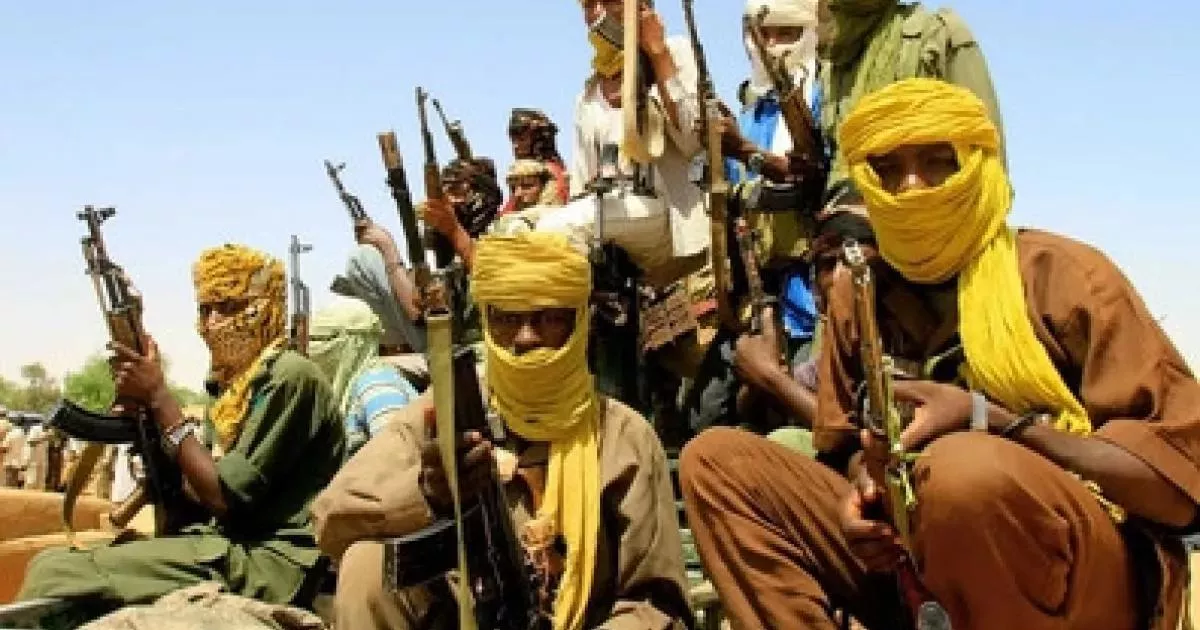The Sudanese conflict in South Kordofan and Blue Nile, fought between the Sudanese Armed Forces and the Sudan People's Liberation Movement–North (SPLM-N), reignited in 2011 after a period of relative peace following a 2005 agreement. The conflict stemmed from the disputed inclusion of South Kordofan and Blue Nile states within Sudan without a popular vote, and the absence of democratic elections. The SPLM-N, an affiliate of South Sudan's SPLM, opposed this inclusion and launched armed resistance. The conflict, beginning in South Kordofan in June and spreading to Blue Nile in September, coincided with South Sudan's independence in July 2011. Adding complexity, the SPLM-N allied with Darfuri rebels in 2011, forming the Sudan Revolutionary Front, linking the conflict with the ongoing War in Darfur.
1969: OAU Convention on Refugees
The 1969 OAU (now AU) Convention on Refugees, Article 2, stipulates that refugees should be settled a safe distance from their country of origin's border.
January 2011: Exclusion from Referendum
South Kordofan and Blue Nile were excluded from the January 2011 referendum on South Sudan's independence, and the promised "popular consultation" process did not occur.
March 2011: Military Deployments
In March 2011, based on satellite imagery, Sudan improved roads for tank movement and began deploying police and military in the region, escalating tensions.
May 2011: Abyei Dispute
In May 2011, tensions escalated over the Abyei Area, an oil-rich region claimed by both Khartoum and Juba. This dispute further fueled the conflict in the leadup to South Sudan's independence.
May 2011: Attack on UN Convoy
On May 19, 2011, an attack on a joint Sudanese Army and UNMIS convoy near Abyei town by alleged SPLA-affiliated militants heightened tensions and drew condemnation.
June 2011: Abyei Demilitarization Agreement
An African Union panel led by Thabo Mbeki facilitated talks in June 2011, leading to an agreement to demilitarize Abyei and deploy UN peacekeepers. The agreement also outlined the formation of a new Abyei administration council.
June 2011: Outbreak of Armed Conflict in South Kordofan
Armed conflict erupted in South Kordofan on June 5, 2011, between the Sudanese government and the SPLM-N, just prior to South Sudan's independence. The SPLA and the Sudanese Army blamed each other for initiating the conflict. The JEM rebel group also claimed an attack in the region.
July 2011: South Sudan Independence and Conflict Escalation
In July 2011, South Sudan gained independence from Sudan. Following this event, the conflict between the Sudanese Armed Forces (SAF) and the Sudan People's Liberation Movement–North (SPLM-N) escalated. The SPLM-N opposed the inclusion of South Kordofan and Blue Nile states in Sudan without popular consultation and the absence of democratic elections.
August 2011: Unilateral Ceasefire Announced
President Omar al-Bashir announced a two-week unilateral ceasefire in South Kordofan in August 2011, restricting humanitarian aid access to the Sudanese Red Crescent.
2011: Start of Ethnic Conflicts
Between 2011 and 2020, ethnic conflicts occurred related to the rebellion, involving pro-SPLM-N Nuba militias and the Hawazma ethnic militia.
2011: Landmine Explosion in South Kordofan
In 2011, a landmine explosion in South Kordofan resulted in five deaths and thirteen injuries. This incident highlighted the ongoing conflict between government troops and SPLM-N rebels, which began in the same year.
May 2012: South Kordofan Crisis Highlighted
In May 2012, researchers warned of a looming crisis in South Kordofan, urging increased humanitarian action and political dialogue to achieve a peaceful resolution.
December 2012: Clashes in Daldoko
On December 10, 2012, clashes occurred in Daldoko between the Sudanese army and the SPLM-N. The rebels claimed to have repelled a government attack, inflicting casualties and capturing military equipment.
2012: Yida Refugee Settlement Deemed Unsafe
Due to the Sudanese border conflict beginning in 2012, the UNHCR declared the Yida refugee settlement unsafe for long-term habitation because of its proximity to the border, prompting relocation efforts.
August 2013: Unilateral Ceasefire
The SPLM-N declared a one-month unilateral ceasefire in August 2013 due to regional floods.
November 2013: Sudanese Troops Recapture Kaling Area
In November 2013, Sudanese troops retook the Kaling area of South Kordofan from SRF rebels, who subsequently moved their operations to the Rashad district.
November 2013: JEM attack on Abu Zabad
JEM guerrillas launched an attack on Abu Zabad in November 2013. The attack was repulsed, resulting in the death of JEM's second deputy general commander.
April 2014: Sudanese Armed Forces Declare Eastern South Kordofan Clear of Militants
In April 2014, following the second phase of Operation Decisive Summer, Sudanese armed forces official al-Sawarmi Khalid announced that the eastern regions of South Kordofan had been entirely cleared of militant presence.
October 2014: Conflict Impact and Displacement
By October 2014, the conflict had significantly impacted about two million people, with over 500,000 displaced. Around 250,000 people fled to South Sudan and Ethiopia.
November 2014: Conflicting Reports on Clashes in Blue Nile Region
In November 2014, SPLM rebels reported launching two attacks on government positions in the Blue Nile region. However, Sudanese officials disputed these claims, stating that clashes occurred between the Sudanese army and rebels in the towns of Yabous and Shali.
December 2014: Clashes Erupt in Alahimr Area of South Kordofan
On December 1, 2014, clashes broke out between SPLM militants and government forces in the Alahimr area of South Kordofan. Both sides blamed each other for initiating the offensive.
December 2014: SPLA-N Captures Territories in South Kordofan, Prompting Government Response
On December 12, 2014, SPLA-N insurgents gained control of the al-Daldako, Ruseiris, and Jabal Nimir areas in South Kordofan. They seized military equipment, including three cannons, a tank, and three military vehicles, and inflicted significant casualties on Sudanese troops. In response, the Sudanese government resumed Operation Decisive Summer in the affected areas and in Darfur.
December 2014: SPLA-N Kills 25 SAF Troops, Seizes Weapons
On December 24, 2014, SPLA-N guerrillas killed 25 SAF troops during fighting near Dalouka. They also seized weaponry from an abandoned military camp in Tourlake.
December 2014: SPLA-N Claims Downing of Sudanese Aircraft
On December 27, 2014, SPLA-N issued a press release claiming responsibility for the downing of a Sudanese air force Antonov aircraft in the Al-Shai'r area of South Kordofan. The rebels claimed that six SAF soldiers were killed in the incident.
December 2014: Sudanese Army Claims 50 Rebel Casualties in South Kordofan Clashes
On December 3, 2014, the Sudanese army reported killing 50 rebels during fighting in the villages of Balanja and al-Atmour, located in South Kordofan.
December 2014: Clashes Continue in South Kordofan
On December 8, 2014, further clashes took place between militants and government forces in South Kordofan.
December 2014: Ceasefire Negotiations Fail
On December 9, 2014, Sudanese authorities announced the unsuccessful conclusion of ceasefire negotiations with the rebels. The failure was attributed to the rebels' demand for joint negotiations with rebels in Darfur. Notably, a significant number of opposition parties had signed a unity agreement with SPLM-N a week prior, expressing support for the group in the negotiations.
January 2015: Intensified Fighting
Fighting intensified in January 2015 as Omar al-Bashir's government aimed to reclaim rebel-held territories before the general elections in April 2015.
January 2015: SPLM-N Commander Idriss Reports on Recent Clashes and Accuses Sudan of Employing Child Soldiers
On January 1, 2015, a video interview was released featuring SPLM-N commander Koko Idriss. Idriss reported on clashes between SPLM-N and government forces over the past three weeks in various locations, including Balinga, Daldako, al-Atmoor, al-Ruseiris, and Gardoud, with the latter falling under Sudanese control. The video showed captured military equipment and alleged the use of child soldiers by the Sudanese government. Idriss also claimed heavy Sudanese aerial bombings on residential areas.
January 2015: SPLM-N Repels SAF Attacks, Inflicting Casualties
On January 11, 2015, SPLM-N reported repelling simultaneous SAF attacks on Dalouka, al-Qnezih, Medem Khor Damar, and Teludi. They claimed 13 government soldiers were killed, while SPLM-N suffered two dead and two injured.
January 2015: Conflicting Reports on Clashes in South Kordofan
On January 15, 2015, SPLM-N claimed to have inflicted over 100 casualties on the Sudanese army while capturing the Blinga camp and military equipment. A Sudanese spokesman offered a conflicting account, claiming SAF repulsed a rebel attack, inflicting heavy losses.
January 2015: SPLM-N Recaptures Towns, Humanitarian Commission Reports Displacement
On January 16, 2015, SPLM-N recaptured the towns of Ankarto and Um Turq-Turq. On the same day, Sudan's humanitarian commission reported that 145,000 people had been internally displaced due to the conflict.
January 2015: SPLM-N Pledges to Destroy Landmines and Release Prisoners
On January 2, 2015, SPLM-N pledged to destroy its stockpiles of anti-personnel landmines. They also announced the release of 20 captured government soldiers as a gesture in response to talks with the Sa'ihoon group.
January 2015: SPLM-N Announces Capture of Talodi-Alnuba Village
On January 21, 2015, SPLM-N announced the capture of Talodi-Alnuba village after seizing a government outpost. A rebel spokesman stated that military equipment was seized as Sudanese troops retreated to Talodi.
January 2015: SAF Bombs Doctors Without Borders Hospital
On January 23, 2015, the Sudanese Air Force (SAF) bombed a Doctors Without Borders hospital in Frandala, a rebel-held village, injuring a patient and a volunteer and causing substantial damage. The UN Office for the Coordination of Humanitarian Affairs condemned the attack.
January 2015: SPLM-N Captures Bulgarian Pilots
On January 26, 2015, SPLM-N captured six Bulgarian pilots.
January 2015: UN Helicopter Shot Down, Sudanese Military Accused of Indiscriminate Shelling
On January 26, 2015, SPLM-N guerrillas shot down a UN helicopter east of Kadugli. The Bulgarian crew landed the damaged aircraft safely. Separately, the Sudan Social Development Organization reported four people wounded in Um Sirdiba and Alatmour due to alleged indiscriminate shelling by the Sudanese military.
February 2015: SPLM-N Releases Bulgarian Pilots
On February 1, 2015, SPLM-N released the six Bulgarian pilots captured on January 26, 2015.
February 2015: Rebel Ambush and Clashes Near Kurmuk
On February 10, 2015, a rebel ambush outside Kurmuk resulted in the deaths of four government troops. On the same day, clashes in the Angasama hills area led to the deaths of four soldiers and the capture of five others by rebels, who also seized weapons and vehicles.
February 2015: SPLM-N Overruns Kahliat Garrison
On February 24, 2015, SPLM-N insurgents overran the Kahliat garrison near Kadugli, resulting in the deaths of ten soldiers and injuries to two rebels.
February 2015: Aid Workers Killed in Blue Nile State
On February 8, 2015, three Sudanese Red Crescent Society aid workers were killed in Kurmuk, Blue Nile state, when their vehicle was attacked by unknown assailants.
March 2015: Rebel Raid on Bau Garrison in Blue Nile
On March 22, 2015, a rebel raid on the Bau garrison in Blue Nile resulted in the deaths of eight soldiers and injuries to four insurgents. The attackers seized weapons and ammunition.
March 2015: Conflicting Reports on Habila Town
On March 28, 2015, SPLM-N claimed to have captured the strategically important town of Habila, reporting 54 soldiers killed and five military vehicles captured. A government spokesman denied the town's capture, accusing the rebels of destroying civilian property.
April 2015: April 2015 General Elections
General elections took place in Sudan in April 2015, amidst the ongoing conflict in South Kordofan and Blue Nile. The government sought to gain control of rebel-held areas prior to the elections.
April 2015: Ambush on SAF soldiers
In April 2015, rebels ambushed Sudanese Armed Forces (SAF) soldiers in the Al-Dabkar and Al Abbasiya-Taqali areas, resulting in the death of 13 SAF personnel.
June 18, 2016: Ceasefire Declaration
On June 18, 2016, Sudanese President Omar al-Bashir declared a four-month ceasefire, aiming to provide armed groups with an opportunity to engage in the peace process and surrender their weapons.
January 16, 2017: Ceasefire Extension
On January 16, 2017, Omar Al-Bashir extended the existing ceasefire by six months.
February 21, 2017: Ceasefire Violation
Sudan attacked SPLM-N positions near Kadugli on February 21, 2017, violating the agreed-upon ceasefire.
April 2019: Al-Bashir Overthrow and Ceasefire
After months of protests, Omar al-Bashir was overthrown in April 2019. The SRF declared a three-month ceasefire, aiming to support a democratic transition in Sudan.
April 2019: SPLM-N Announces Suspension of Hostilities
In April 2019, SPLM-N leader Abdulaziz al-Hilu announced a three-month suspension of hostilities to allow for a peaceful transition of power to civilians.
April 2019: Overthrow of Omar al-Bashir
In April 2019, following weeks of protests in Khartoum, President Omar al-Bashir was ousted from power in a coup d'état orchestrated by the Sudanese Armed Forces.
July 31, 2019: SPLM-N Hostilities Suspension
The SPLM-N announced a suspension of hostilities in South Kordofan and Blue Nile state until July 31, 2019, as a gesture of goodwill to facilitate a civilian transfer of power.
August 2019: Draft Constitutional Declaration and Peace Negotiations
In August 2019, a Draft Constitutional Declaration mandated a peace agreement for South Kordofan, Blue Nile, and Darfur within six months of the transition period. This formalized the peace process between the rebels and the interim government.
August 2020: Juba Peace Agreement
A comprehensive peace agreement was signed in Juba, South Sudan, in August 2020 between Sudan's transitional government and the SRF. However, some factions, including the SPLM-N led by Abdelaziz al-Hilu and the Sudan Liberation Movement/Army led by Abdul Wahid al-Nur, refused to sign.
August 2020: Comprehensive Peace Agreement
A comprehensive peace agreement was signed in Juba, South Sudan, in August 2020 between Sudan's transitional government and the Sudan Revolutionary Front (SRF), excluding SPLM-N (al-Hilu) and SLM (al Nur).
September 2020: Agreement on Separation of Religion and State
An agreement was reached in September 2020 in Addis Ababa between the transitional government and the SPLM-N al-Hilu faction to separate religion and state and ensure equal treatment of all citizens regardless of ethnicity or religion.
October 2020: Another Peace Deal Signed
In October 2020, another peace deal was signed between the SRF, SPLM-N (Agar), SLM (Minnawi), and the Sudanese government, though al Nur and al-Hilu remained absent.
2020: End of Initial Ethnic Conflicts
The initial period of ethnic conflicts related to the rebellion ended in 2020, but the conflicts reemerged with renewed fighting in 2023.
March 2021: Peace Agreement with Al-Hilu
In March 2021, Al-Hilu signed a peace agreement with the Sudanese government, aiming to establish a civil, democratic federal state with freedom of religion and a unified national army. Al-Nur continued to refuse negotiations.
2023: Resurgence of Civil War and Insurgency
In 2023, a new civil war erupted in Sudan between the SAF and the Rapid Support Forces. The SPLM-N Agar faction sided with the SAF, while the al-Hilu faction reignited their insurgency against both sides, capturing territory and reigniting ethnic conflicts.
Mentioned in this timeline
Sudan officially the Republic of the Sudan is a country...
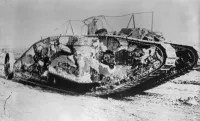
A tank is an armored fighting vehicle designed for front-line...
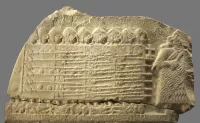
War is defined as an armed conflict involving the organized...
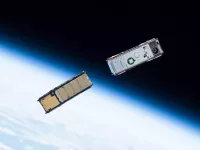
Satellites often spacecraft are objects intentionally placed into orbit around...
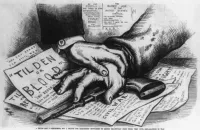
A ceasefire represents a temporary suspension of hostilities in a...
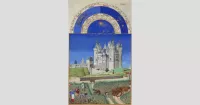
September is the ninth month of the year in the...
Trending
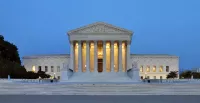
6 months ago Supreme Court upholds Tennessee's ban on gender-affirming care for transgender youth: Landmark case.

7 months ago PJ Haggerty Transfers to Kansas State, Withdraws from 2025 NBA Draft.
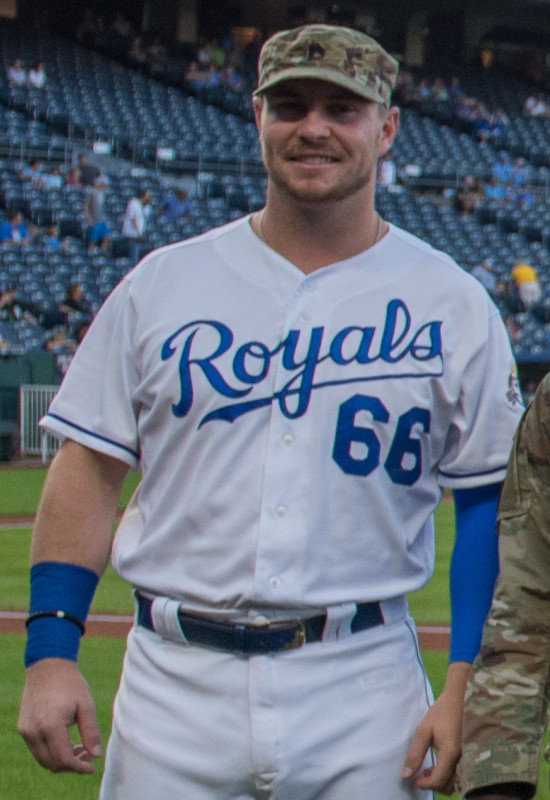
Ryan O'Hearn is a professional baseball first baseman currently playing for the Baltimore Orioles in MLB Previously he played for...

5 months ago Ben Simmons' NBA Future Uncertain: Unsigned, Celtics Rumors, and Four Team Interest

USA Basketball USAB is the governing body for basketball in the United States and represents the country in FIBA It...
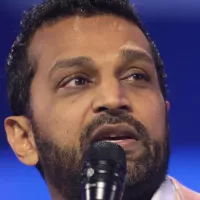
6 months ago Kash Patel, FBI Director, entangled in 2020 election conspiracy probe.
Popular

Tucker Carlson is an American conservative political commentator known for...

Candace Owens is an American conservative political commentator and author...

XXXTentacion born Jahseh Dwayne Ricardo Onfroy was a controversial yet...

Ben Shapiro is a prominent American conservative political commentator media...
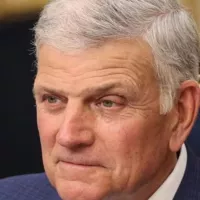
William Franklin Graham III commonly known as Franklin Graham is...

John F Kennedy JFK was the th U S President...
